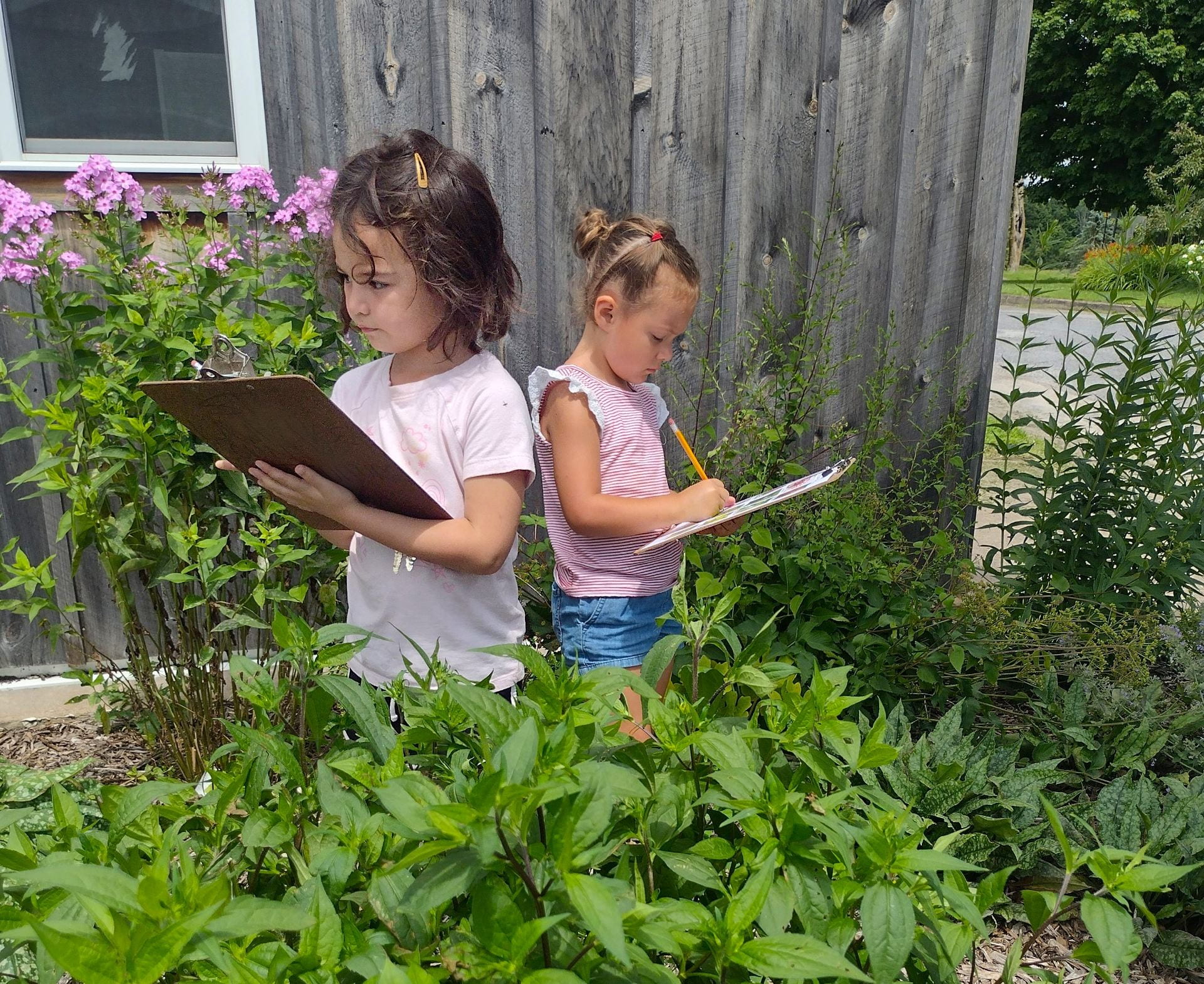
It’s been a joy this week to host 50 Farm Day Camp youth (5-12 years old) in our pollinator garden for a scavenger hunt and a lesson about protecting and supporting our native pollinators like this eight-spotted forester moth (Alypia octomaculata) we found…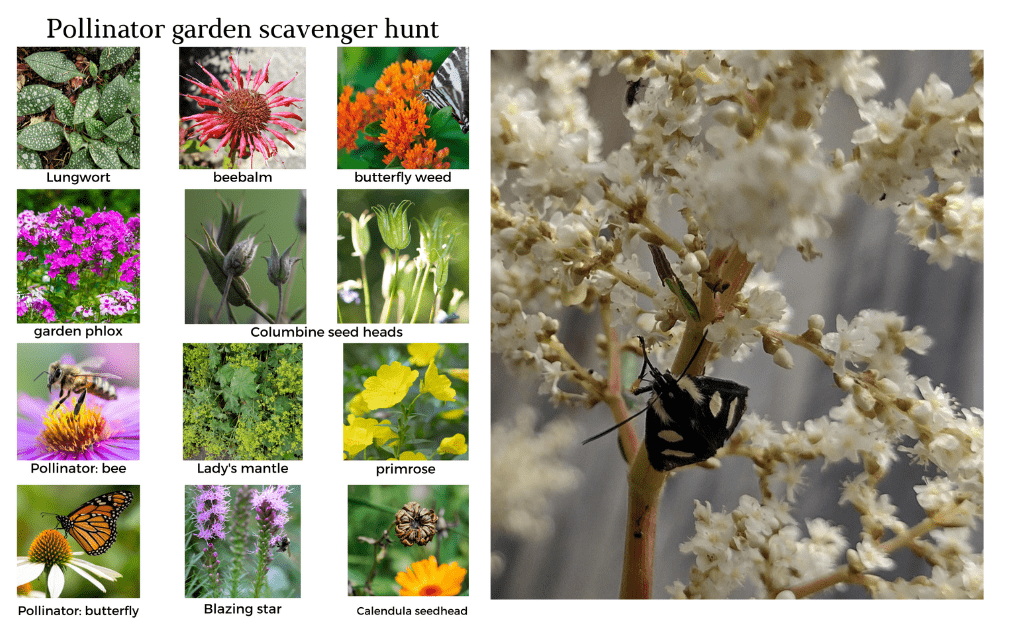 and this hummingbird clear wing (Hemaris thysbe).
and this hummingbird clear wing (Hemaris thysbe).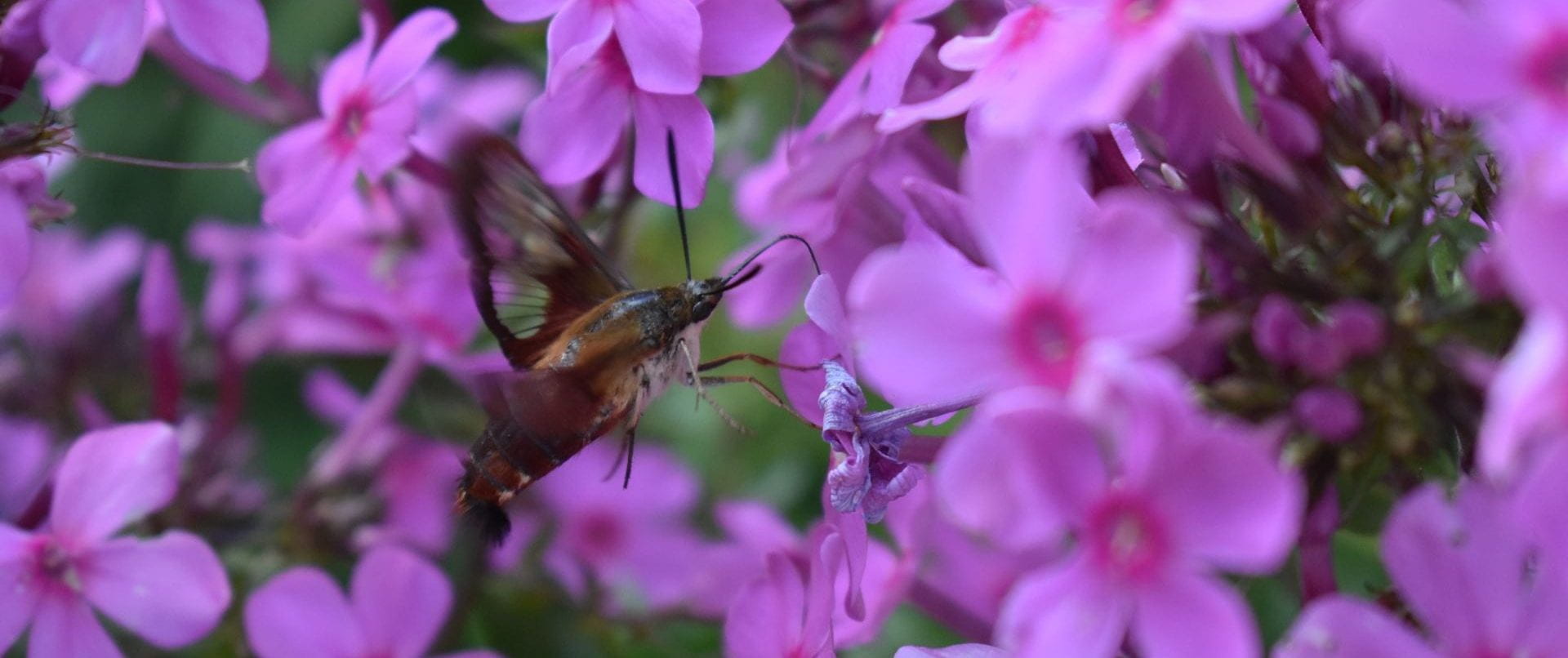
A scavenger hunt is a way to guide and motivate each child to closely observe the details of their surroundings. Once they’ve put in a good effort, they can start to help each other find the flowers, leaves, seed pods, and insects.
Being able to use this vibrant garden as an outdoor teaching space is the culmination of nearly two years of work from our dedicated Master Gardener Volunteers to plan the layout, prepare the site, and plant and maintain the garden. Nancy Alessi weeded the garden in April, and several times since!
Nancy Alessi weeded the garden in April, and several times since!
The plants are mostly natives, like this obedient plant (Physostegia virginiana), since native plants go further for providing food and habitat for native pollinators.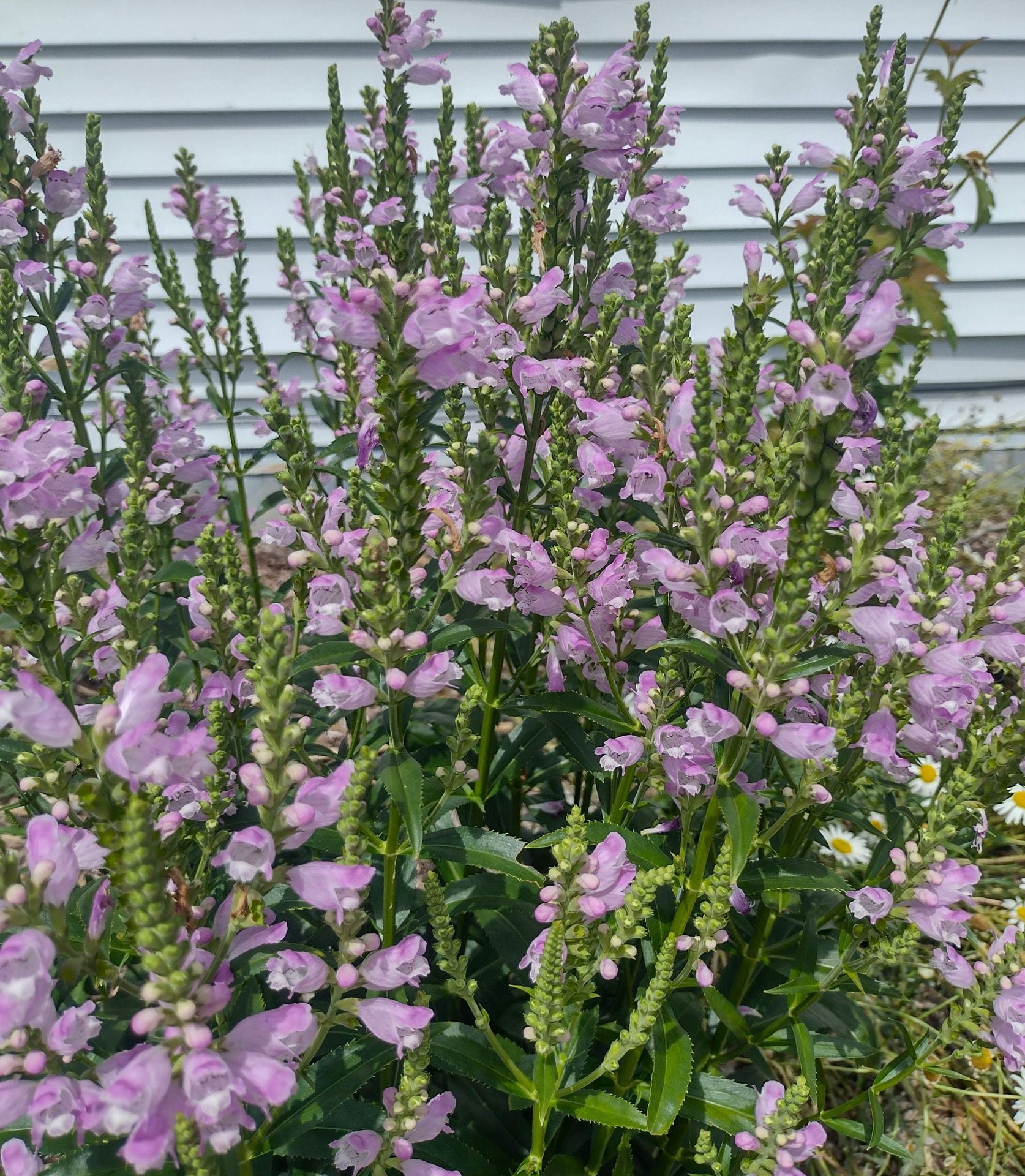
In addition to being a tool for teaching, a colorful addition to the landscape of the Extension Learning Farm, and a source of food and shelter for pollinators, this garden is also a way for Master Gardener Volunteers to memorialize their friend and fellow Master Gardener, Daun Martin-Poole. Daun, who was active in the Dekalb historical garden and 4H programing, passed away in 2021, and is sorely missed by her friends and family, who have contributed to the establishment of the garden.
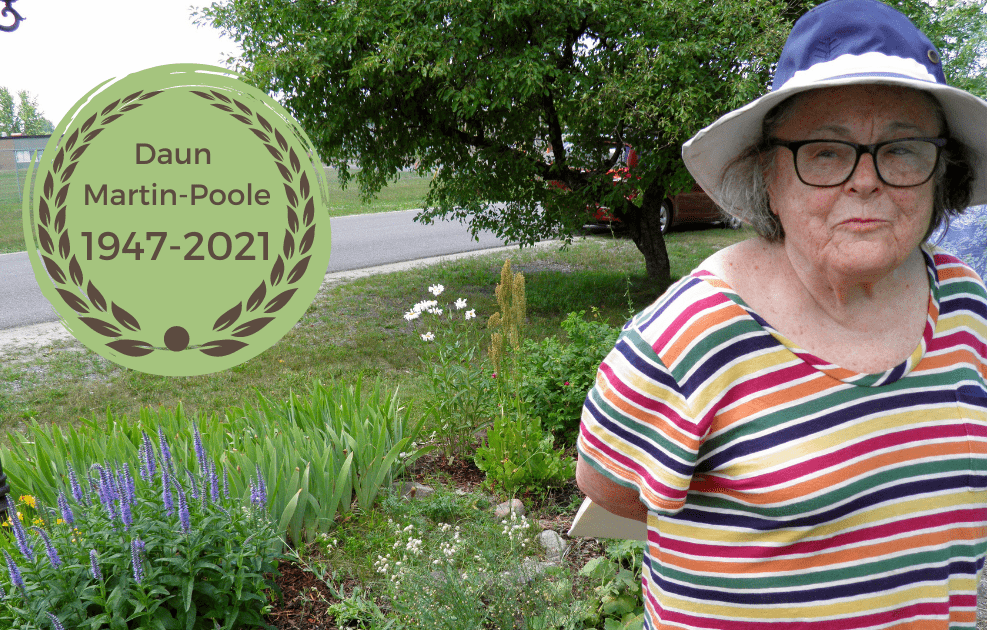
This year, the garden will become an official Monarch Waystation, a certification for gardens that provide for the life stages of monarchs (Danaus plexippus). These gardens also cater to many other declining pollinator species, which in New York State includes many species of mason bees, leafcutter bees, sweat bees and more.
Extension can assist with recommendations or resources if you are interested in joining the movement to help pollinators by leaving some areas wild, planting native plants, refraining from using harmful chemicals, and learning about New York State’s wild pollinator species (450 native bees alone!) After all, many of our commercial crops and the biodiversity of our environment depend on them.
Resources
- Gardens and ground pollinator section
- Farm Day Camp
- Monarch Waystation program
- New York State Pollinator Plan
- Fruition post about Daun
Erica LaFountain is Community Horticulture Educator for St. Lawrence County. She has a background in organic vegetable farming, gardening, and orcharding and has a homestead in Potsdam, NY.